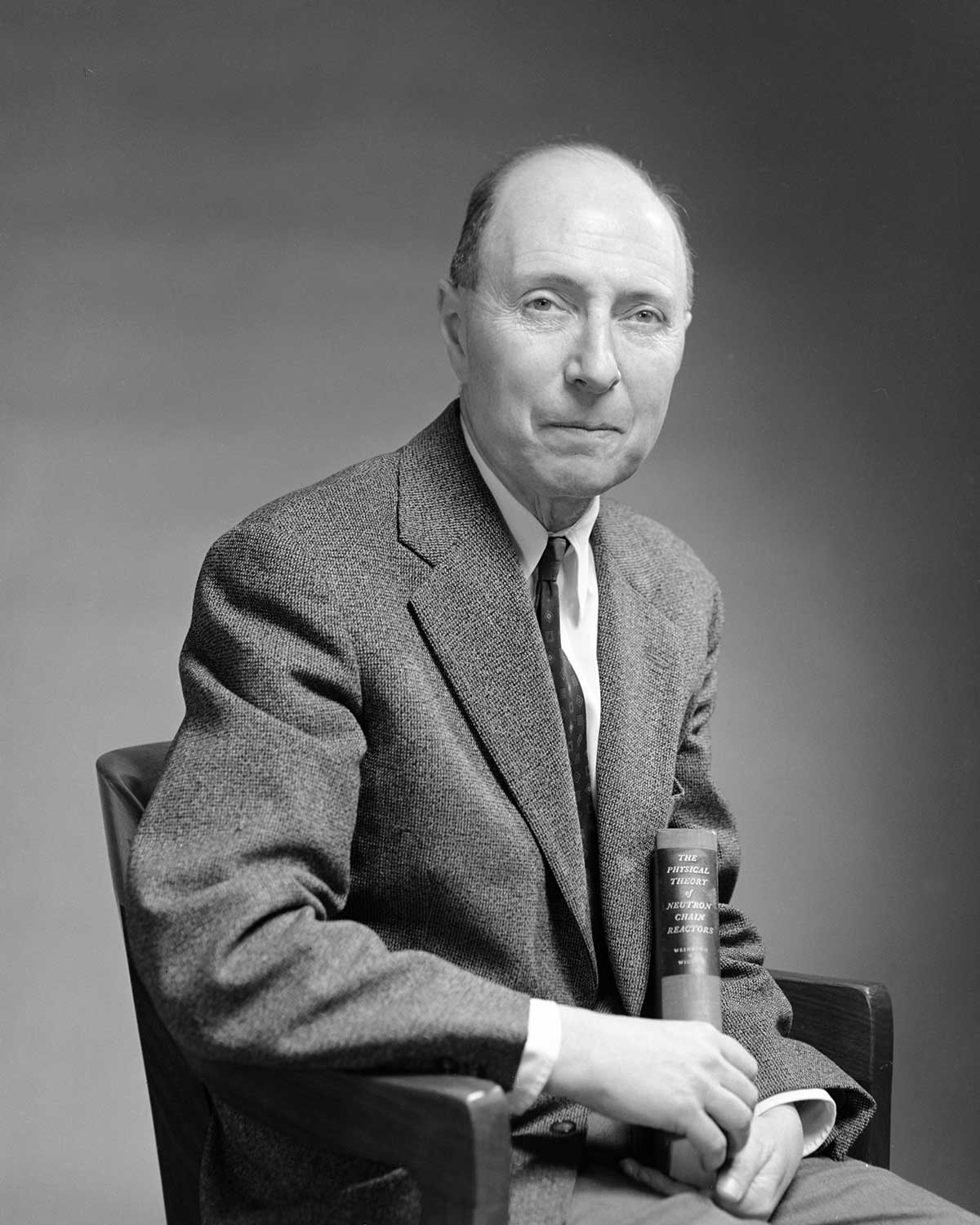Eugene Wigner (1903 - 1995)

Eugene Paul Wigner was born n Budapest, Hungary, on November 17, 1902. In 1921, he graduated from the Lutheran Gymnasium and went on to study at the Technische Universitat Berlin, receiving his Ph.D. in chemical engineering.
In the late 1920s, Wigner explored deeply in the field of quantum mechanics, devoting himself to physics. He laid the foundation for the theory of symmetries in quantum mechanics. In the late 1930s, he extended his research into atomic nuclei and developed an important general theory of nuclear reactions. He was brilliant as a theorist, brilliant in the laboratory and had a deep understanding of engineering as well.
In 1930, Princeton University recruited Wigner and von Neumann. When Adolf Hitler came to power in Germany in 1933, Wigner and von Neumann found safe haven in Princeton, N.J., thought they still spent half the year in Europe, traveling, studying and teaching. During that time, Wigner also spent time with Einstein, who had come to Princeton to join the Institute for Advanced Study.
In 1936, Princeton did not rehire Wigner, and he moved to the University of Wisconsin. There, he met his first wife, a physics student named Amelia Frank. Sadly, she died in 1937, the same year Wigner became a naturalized citizen of the U.S. Princeton invited Wigner back based on his reputation as a superb young physicist, and he accepted, rejoining the Princeton faculty in the fall of 1938.
With the discovery of fission, Wigner began working with Enrico Fermi on the problem of determining whether a fission-induced chain reaction was possible. He worked with Fermi at the Metallurgical Laboratory from 1942-1945. By the time Fermi's reactor actually went critical, Wigner and his team had completed the task of almost unbelievable proportions: the design of the full-scale Hanford production reactors. He then continued to assist in their construction.
In 1946, Wigner accepted a job as director of research and development at Clinton Laboratory (now Oak Ridge National Laboratory) in Oak Ridge, Tenn. Not an administrator by background or temperament, Wigner left after a year and returned to teaching and research at Princeton University.
Official recognition of his work in nuclear research includes the Enrico Fermi Award in 1958 and the Atoms for Peace Award in 1960. In 1963, Wigner received the Nobel Prize in Physics, along with American physicist Maria Goeppert-Mayer and German physicist J.H.D. Jensen, for work on the structure of the atomic nucleus.
In 1992, at the age of 90, Wigner published a memoir, "The Recollections of Eugene P. Wigner." He died in Princeton on January 1, 1995.